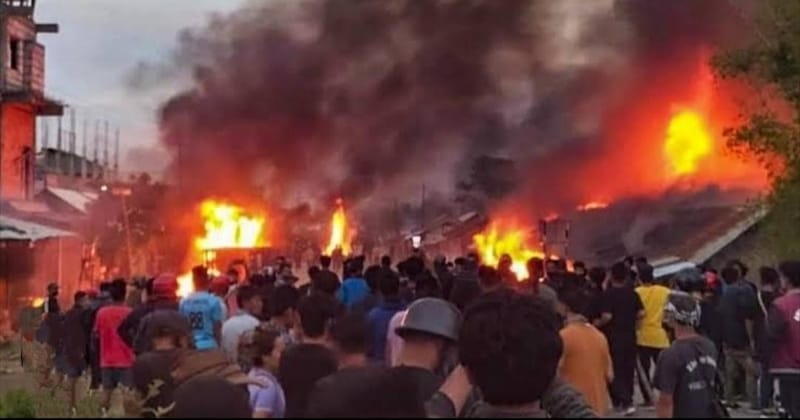Unravelling the Complexity of Manipur Violence in India
Introduction:
The northeastern state of Manipur, nestled amidst the picturesque landscapes of India, has long been grappling with the issue of violence. The region's complex historical, social, and political dynamics have contributed to a volatile environment, marked by insurgency, ethnic tensions, and human rights concerns. This article aims to shed light on the root causes and consequences of Manipur's violence, as well as the efforts made to address these challenges.
Historical Context:
To understand the violence in Manipur, it is crucial to delve into its historical backdrop. Manipur, with its rich cultural heritage and distinct identity, has had a tumultuous past, marked by the imposition of external authority and frequent political upheavals. The region's integration into the Indian Union in 1949 and subsequent statehood in 1972 have fueled tensions, resulting in demands for greater autonomy and self-determination.
Insurgency and Armed Struggles:
One of the primary sources of violence in Manipur stems from various insurgent groups operating in the state. These groups, driven by grievances related to socio-political marginalization, often resort to armed struggles as a means to achieve their objectives. Their demands range from self-governance, protection of cultural identity, and economic development to redressal of alleged human rights violations by security forces.
Ethnic Tensions and Conflict:
Manipur is a diverse state, comprising multiple ethnic communities, each with its distinct culture, language, and aspirations. These divisions, combined with limited resources and political representation, have fueled inter-ethnic tensions and conflicts. Competition over land, resources, and socio-economic opportunities has further deepened the fault lines, leading to sporadic outbreaks of violence between communities.
Human Rights Concerns:
The prolonged violence in Manipur has also raised significant human rights concerns. Both security forces and insurgent groups have been accused of violations, including extrajudicial killings, disappearances, torture, and arbitrary detentions. Such actions have perpetuated a cycle of violence, eroded trust between the state and its citizens, and hindered efforts towards peace and reconciliation.
Efforts Towards Peace and Reconciliation:
Recognizing the urgent need to address Manipur's violence, various initiatives have been undertaken at both the state and national levels. Dialogue processes, involving the government, civil society organizations, and insurgent groups, have been initiated to facilitate negotiations and find peaceful resolutions to the longstanding conflicts. Additionally, development programs aimed at addressing socioeconomic disparities and promoting inclusivity have been implemented to alleviate grievances.
The Way Forward:
Resolving the violence in Manipur requires a multi-faceted approach that considers the historical context, socio-political dynamics, and aspirations of the people. It necessitates an inclusive and participatory process that prioritizes dialogue, justice, and development. Strengthening institutions, promoting accountability, and protecting human rights are essential components of this endeavor.
Conclusion:
The violence in Manipur is a complex issue deeply rooted in historical, social, and political factors. It is essential to recognize the diverse grievances, promote dialogue, and address the socio-economic disparities to find lasting solutions. With sustained efforts towards peace, reconciliation, and respect for human rights, Manipur can move closer to a future marked by harmony, prosperity, and social justice.


